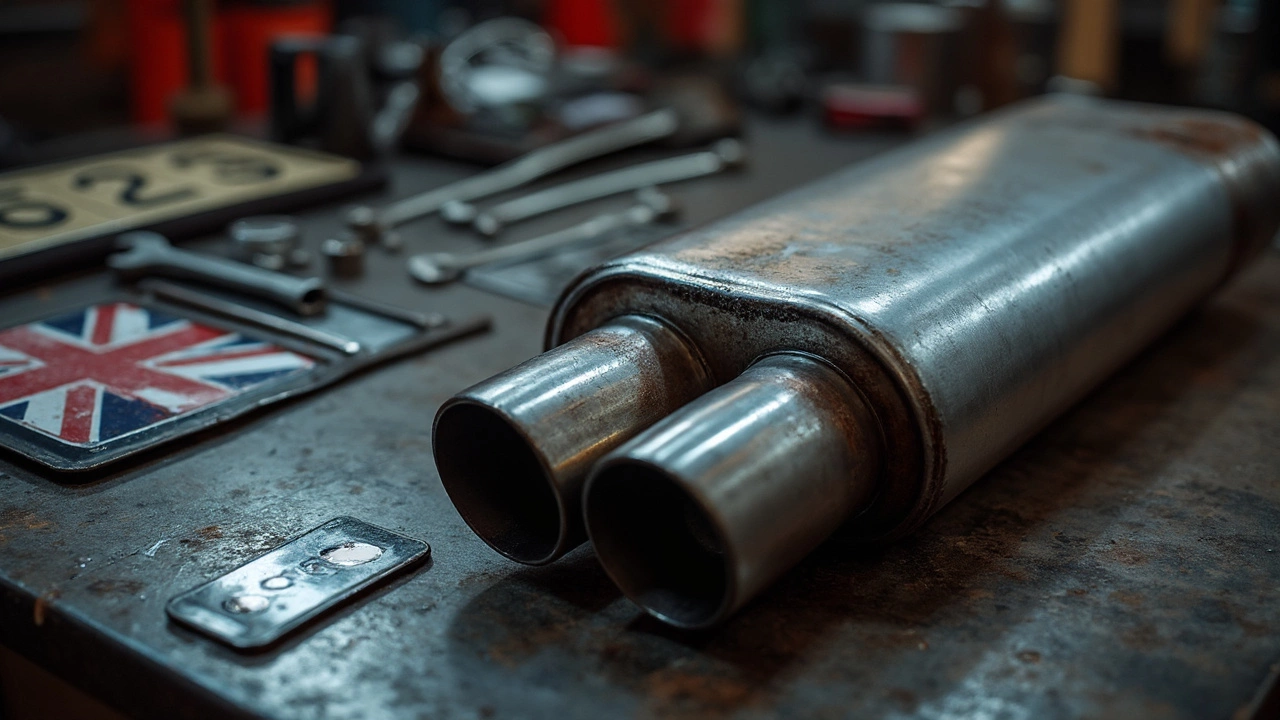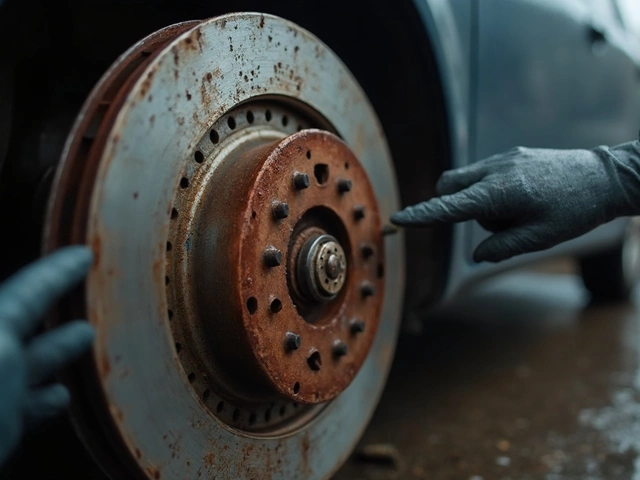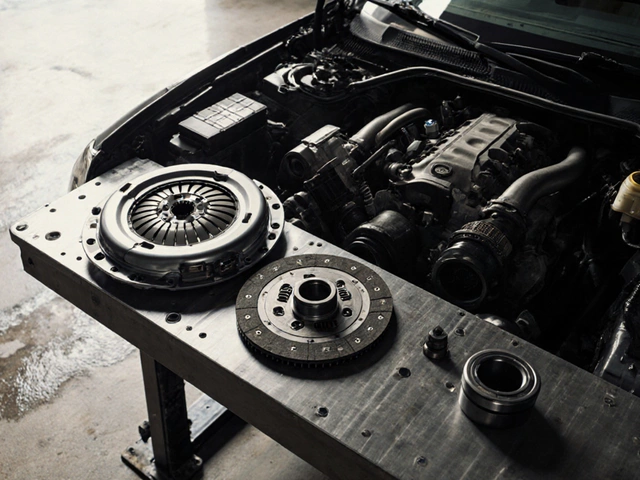Ever leaned out your window and caught the growl of a car that just demands attention? That’s the throaty exhaust sound—bold, deep, and nearly impossible to ignore. It’s more than noise; it’s personality in metal and gas. Getting that sound, though, isn’t just about ripping off your muffler or stomping harder on the gas. There’s a real science behind it, along with a bit of art, and plenty of strange misconceptions. If you’ve spent hours on late-night forums or asked your mechanic friends, you know this topic never gets old. Your car’s voice doesn’t have to be a muffled whisper—here’s how to truly let it roar.
How Your Car’s Exhaust Sound Actually Works
Everything starts with your engine and exhaust system working together in one big symphony (or cacophony, if you get it wrong). The basic idea: your engine burns fuel, creating exhaust gases that rush through pipes and end up shooting out your tailpipe. But those gases and sound waves don’t travel in a vacuum. They bounce and collide, bounce off bends, go through chambers and sometimes get muffled before they ever reach your ears.
The deeper and richer the sound—the kind people call "throaty"—mostly comes from three things: engine size and layout, exhaust piping diameter and length, and the actual muffler or resonator. Bigger engines, especially V6s and V8s, naturally give you a bassier note because they create more exhaust pulses. Inline-fours tend to be buzzier but can still get that growl with the right tweaks. Pipe diameter plays a surprising role. Too small, and your car sounds constricted or tinny; go too big, and it might drone or lose all the character. Most stock pipes sit around 1.5 to 2 inches—aftermarket systems often jump to 2.25 or 2.5 inches for a meatier sound.
Why does your factory muffler sound so bland? Blame regulations. Car makers have to meet noise limits, so stock mufflers are loaded with sound-absorbing chambers, fiberglass, and sometimes even fake pipes just to keep things civilized. That’s why upgrades matter; they don’t just "make it louder," they let through those chest-thumping low frequencies that mark a true throaty exhaust.
Ever wonder what your car might look like stripped down? Race cars often run straight pipes—no muffler, no cats, just raw noise. Sure, it’s extreme (and not street legal), but it’s a good way to understand what a muffler actually blocks out. In a dyno test, muscle cars with straight pipes picked up only a small bit of extra horsepower, but the sound was what everyone talked about—deep, thunderous, a literal crowd magnet at any cars-and-coffee meet.
Of course, local laws matter too. Every region has a different decibel limit. Some places hand out tickets just for a rumbling idle. Don’t risk getting on your neighbor’s bad side—or worse, the traffic cops—without checking first.
The Top Ways to Get a Throaty Exhaust, Step by Step
The cool part? You don’t need thousands to get a throatier note, but skipping proper steps can make your ride sound cheap or even wreck your engine’s performance. Here’s the best way to chase that perfect rumble:
- Swap Out Your Muffler: Not all mufflers are created equal. Chambered mufflers (think Flowmaster-style) bounce exhaust back and forth inside metal chambers, creating that classic muscle car bark. Glasspack (straight-through) mufflers use a perforated core wrapped in fiberglass—these let more sound through, giving you a sharper growl but less low-end boom. Brands like Borla and MagnaFlow are famous for their deep tones.
- Increase Pipe Diameter: Going bigger with your exhaust pipes (usually 2.25-2.5 inches) can instantly deepen your sound. Avoid going too large though, or you’ll lose backpressure and low-end power.
- Install an Aftermarket Resonator: A resonator tunes out unwanted high-frequency noise, letting through just the frequencies that sound good to the human ear. Walker and Vibrant Performance make resonators specifically to add depth and bass to your exhaust note.
- Go for a Performance Header: Factory exhaust manifolds are heavy and restrictive. Swapping to a tubular header frees up flow and sharpens your sound, often giving you the aggressive bark you hear on tuned imports.
- Choose a Larger Tip: The tip at the end might seem trivial, but a wider or double-walled tip amplifies bass notes as the sound exits. Rolled-edge and slash-cut tips both deepen the tone in small but noticeable ways.
- Use High-Flow Catalytic Converters: Standard catalytic converters muffle sound heavily. A high-flow cat won’t eliminate restrictions but does let more sound through while staying emissions-legal in many areas.
- Delete the Center Muffler or Resonator: Some cars come with multiple silencers. Removing the mid-muffler (legally!) lets you get a slightly raspier but much fuller exhaust note. Just skip this mod if you cross state lines frequently—laws differ everywhere in the U.S.
If it sounds like a puzzle, that’s because it kind of is. Each car reacts differently based on its engine, original exhaust setup, and even fuel quality. For example, German sedans tend to get throatier with a resonator delete, while older Japanese coupes shine with a glasspack muffler. Plus, there’s the age-old argument over stainless steel vs. aluminized steel—stainless may sound sharper and last much longer in wet climates.
Want numbers? On a dyno run of a stock Ford Mustang GT, swapping in a simple Borla axle-back muffler added a huge 13 decibels to its idle and a thunderous 21 decibels at full throttle—enough to rattle the windows in most neighborhoods. Here’s a quick look at decibel changes for popular swaps:
| Modification | Approx. Decibel Increase |
|---|---|
| Performance Muffler | +8 to +15 dB |
| Resonator Delete | +4 to +10 dB |
| Pipe Diameter Increase | +3 to +7 dB |
| High-Flow Cat | +2 to +6 dB |
| Straight Pipes (Track Use) | +15 to +25 dB |
Always keep in mind, chasing numbers isn’t everything. A throaty exhaust sound is about frequencies and tone, not just loudness. A 100 dB screech is nowhere near as satisfying as an 85 dB rumble that you actually feel in your chest.

Insider Tips for That Perfect Growl—and What to Avoid
Everyone’s heard horror stories about friends hacking off their mufflers, only to end up with a car that sounds like a rusty lawnmower. There’s a lot of trial and error, but you don’t need to reinvent the wheel. Some of the best tricks rely on surprisingly small changes.
- Read up on your car’s stock sound deadening. Modern cars are loaded with foam and trunk insulation. Pulling out factory sound deadening around the trunk’s rear panel lets a bit more engine noise into the cabin, which can make your exhaust seem deeper. Just don’t overdo it or your car becomes a road trip nightmare.
- Always bolt or weld, never clamp unless you absolutely have to. Clamped connections loosen and rattle over time, which turns throaty bass into annoying buzzing.
- Pair your exhaust mods with an air intake swap. A cold air intake or short ram kit will let your engine breathe better and actually slightly deepen your exhaust note. The difference is subtle, but you’ll hear it when you floor it.
- Watch out for cabin drone! The #1 complaint from cheap exhaust setups is a low-frequency hum at highway speeds that gives you a headache after 20 minutes. If you daily drive, aim for mufflers with drone-canceling tech, like MagnaFlow’s “No Drone” series.
- Dyno first, don’t guess. If you’re going beyond a simple muffler swap, a quick dyno run tells you everything about your car’s starting point—so you know which frequencies to target and avoid wrecking your powerband.
- For turbocharged cars, try a turbo-back exhaust. Turbo engines already mellow out some noise. High-flow downpipes and fewer bends can wake up the growl without making things painfully loud.
Don’t forget about neighbor harmony. One Redditor from Seattle installed a cut-out valve, which lets him flip a switch and go from neighborhood-quiet to "wake the dead" track mode instantly—no tools needed. It’s not cheap, but it’s genius if you live in a hilly suburb or have different sound limits on weekends.
Avoid the urge to go full straight-pipe unless you only track your car. Yes, it’s fun for a burnout video, but in real life, you’ll trigger every car alarm and draw attention from cops who’ll treat you like a rolling ticket machine. Instead, a combination of a high-flow muffler, resonator tweaks, and smart tuning gets you 90% of the sound without 100% of the headaches.
Legal Stuff, Reliability, and Making It Truly Yours
No matter how deep you want your car to sound, you never want to end up on the wrong side of the law—or stuck on the shoulder fixing something you could have avoided. Every city has different rules on exhaust loudness. In Los Angeles, it’s 95 dB, measured at 20 inches from the tip. New York clamps down harder, with big fines if you exceed limits near schools or hospitals. Most places allow modifications as long as you keep emissions gear intact (especially the catalytic converter), and the noise isn’t obnoxious. Always check your state’s laws before you buy anything.
Reliability is another biggie. Lean exhaust setups—too few bends, no proper muffling—can put extra heat on your valves and gaskets. Running straight pipes all the time can even trip engine sensors if you get rid of too much backpressure. You might see warning lights for “Check Engine,” poor idle, or rough shifting. A properly sized, tuned exhaust setup can actually extend the life of your engine by letting it breathe more naturally.
Maintenance tip that most people skip: check your hangers and bushings every time you swap parts. Aftermarket exhausts are heavier and vibrate more than stock setups, so failed hangers or worn-out rubber bushings can lead to exhaust leaks or sagging pipes. If you’re doing the work yourself, always swap in polyurethane hangers—they’ll never rot out and they hold everything snug even after years of hard driving.
Ready for the fun part? Personalizing your exhaust is more than just parts shopping. Your own taste matters. Maybe you’re into old-school V8 roar that shakes your mirrors, or you want a note that’s crisp and crackly on downshifts like a tuned BMW. Try sound clips online: most performance muffler brands post actual drive-by and rev videos so you’ll know exactly what your setup will sound like before you spend a dollar. Next time you’re at a car meet, ask people what they’re running and take notes. Everyone loves showing off their exhaust tips—and they’ll tell you what not to do, too.
If you’re feeling lost, write out exactly what you want: loud at idle, more bass, less rasp, zero drone, etc. Bring that list to your installer (or favorite mechanic) and ask for advice. No one sound fits every car, but with dozens of muffler brands and tip types out there, you’ll absolutely find a setup that says “this is me.”
That deep, throaty exhaust sound isn’t just a dream—it’s an afternoon and a few smart swaps away. Just remember: think about sound, not just noise, and enjoy every minute of the chase.




